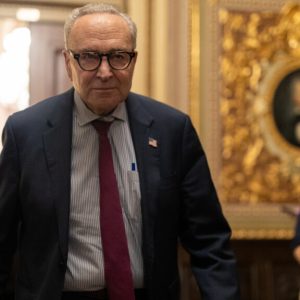President Donald Trump made headlines this week after announcing on Truth Social that nearly every American would soon receive a $2,000 “dividend” generated from what he describes as unprecedented national wealth created by his tariff policies. Trump argued that the tariffs imposed during his administration have transformed the United States into “the richest, most respected country in the world,” citing record stock market levels, high 401(k) performance, strong investment in domestic manufacturing, and what he claims is low inflation. He portrayed the payments not as traditional stimulus but as a reward for the revenue his tariff strategy has brought into the Treasury. This announcement immediately sparked public attention, speculation, and questions about who would qualify — and whether the government could realistically deliver such a large payout.
Treasury Secretary Scott Bessent provided the first concrete details regarding eligibility, stating that the payments would likely be limited based on income. He suggested that families earning under $100,000 annually could receive the payouts, though he emphasized the threshold is still under discussion. If this income cap is adopted, roughly 150 million Americans could qualify, far more than the number eligible for earlier Trump-era stimulus payments, which cut off at $75,000 for individuals and $150,000 for married couples. Tax Foundation economist Erica York estimated that a program at this scale would cost approximately $300 billion, raising further questions about feasibility. Bessent’s comments also signaled the administration’s intent to position the proposal as middle-class relief rather than a universal payout.
Even though Trump framed the initiative as a $2,000 “check,” the administration later downplayed expectations that Americans would receive direct payments. Bessent clarified that the relief could come in multiple forms, including targeted tax reductions rather than physical checks. He pointed to several components of Trump’s tax agenda already in progress: no taxes on tips, no taxes on overtime pay, no taxes on Social Security income, and new rules that would allow Americans to deduct auto loan payments. He argued that these tax changes are effectively putting money back into Americans’ pockets and could serve as the mechanism through which the promised $2,000 benefit is delivered. The administration appears to be exploring a mix of tax credits, rebates, and direct savings rather than a single payment structure.
Despite the lack of clarity, the White House insists that the president is firmly committed to ensuring Americans receive the full value of the promised $2,000. Press Secretary Karoline Leavitt told reporters that Trump has instructed his economic team to find feasible ways to translate the announcement into tangible relief. The administration is reportedly weighing whether the benefit should be distributed annually, as a one-time rebate, through payroll tax adjustments, or via refundable tax credits. This ambiguity has fueled debate among analysts and lawmakers, with supporters praising the administration’s creativity and critics warning that unclear messaging may create unreasonable expectations. The internal discussions show that Trumpworld is attempting to balance political appeal with logistical and fiscal constraints.
A major unresolved issue — and perhaps the most significant — is the question of funding. Tariffs currently bring in far less revenue than what would be required to finance a $2,000 payout to so many Americans. As of September 30, total U.S. tariff revenue stood at $195 billion. Even projected forward, tariff collections are estimated by the Treasury Department to reach $3 trillion over the next decade, but drawing from future revenue would add pressure to a national debt already exceeding $38 trillion. Using future tariff revenue would not only deepen the deficit but also risk destabilizing long-term fiscal planning. Nonetheless, the administration appears prepared to lean heavily on tariff expansion to close the funding gap, positioning tariffs as both an economic engine and a primary financing tool.
Consistent with this approach, Trump has announced new and more aggressive tariff measures, including a 50% tariff on imported cabinets and a potential 100% tariff on branded pharmaceutical products. These moves reflect the administration’s strategy of using high tariffs as both a revenue source and a political message about economic nationalism. Trump continues to argue that tariffs strengthen the U.S. economy by attracting investment and reducing dependency on foreign manufacturing. Whether this strategy can generate enough revenue to fund the proposed $2,000 “dividend” remains uncertain, but the administration’s rhetoric suggests that tariffs will remain central to its economic messaging. As Americans await clearer details, the proposal stands as a bold, controversial, and politically charged promise with major implications for the federal budget and the wider economy.





